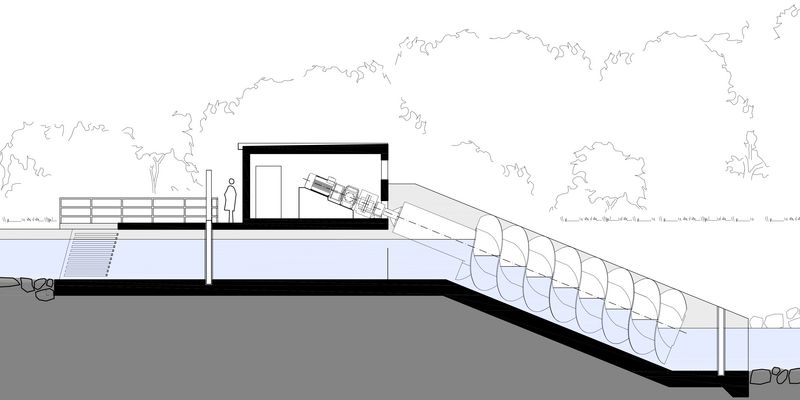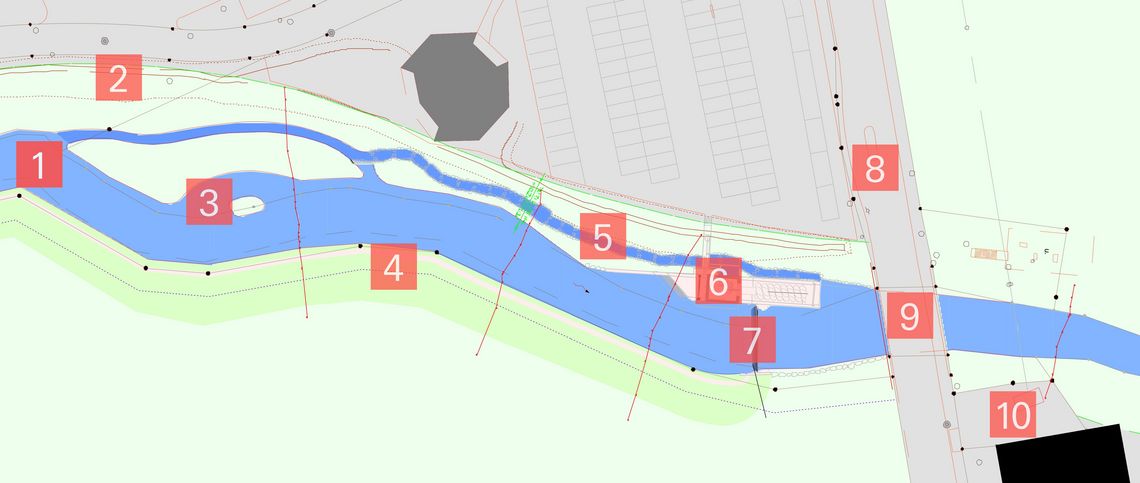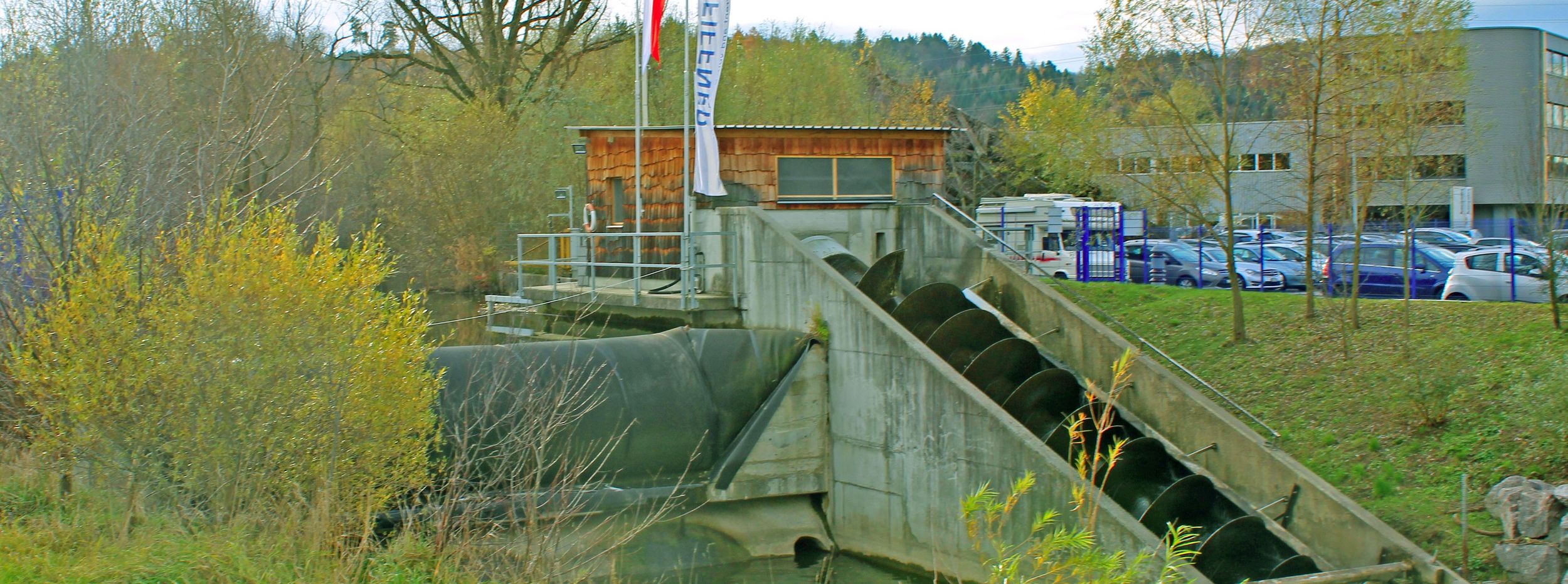Hydropower Station Hirschthal
The most productive form of solar energy in Switzerland.
Water is evaporated by the power of the sun, and returns back to the earth in the form of snow and rain, flowing back into lakes and seas again. By using the power of flowing water, entirely renewable energy can be generated.
Efficient and Environmentally Friendly
Hydropower is the most efficient and presumably the most environmentally friendly way to generate electricity. Apart from variations dependent on weather conditions, hydropower is available the whole year though and 24 hours a day.
Consequently, hydropower is one of our most valuable and constant sources of energy. With the hydropower station in Hirschthal, power can be generated for approximately 100 households (420'000 kWh, rated power 100 kW).

Water Wheel Turbine
As a result of the revision of the project, it has been decided to install a new version of an old type of turbine, the Archimedean Screw – in particular as a result of ecological considerations. This water wheel turbine, a cross between a traditional water-wheel and a turbine, has its origin in the 3rd century B.C. In our case, the water flows in a 75 x 90 cm channel from the headwater conduit to the tailwater channel and, thanks to force of gravity, turns the Archimedes’ screw. This also allows the local fish to swim downstream in a simple manner.
The Archimedes’ screw rotates relatively slowly with 10 to 20 revolutions per minute so that the rotational speed must by raised by means of a gear train. Finally, an asynchronous generator with a frequency converter is driven. The efficiency is only approximately 10 % lower than in the case of comparable high-tech turbines; on the other hand operation is much less fault-prone and the passing-though of fish is optimally guaranteed.

1 Original river course | 2 Existing dam | 3 Extended river course | 4 Bank increase | 5 Fish pass | 6 Power station building | 7 Inflatable weir | 8 Holzikerstrasse | 9 Bridge | 10 Transformer station
Fish Pass
Since the construction of the “new” bridge over the river Suhre, the river bed has been raised by 70 cm as a result of detrital rubble being deposited by the flow of the river. This has lead to a dangerous bottleneck in the case of high water. Together with the power station project, the riverbed has been lowered by approximately 1 m so that even in the case of high water no flooding can occur.
Depending on how they are built, hydropower stations represent an obstacle for fish which is more or less difficult to get past. One of the main problems is enabling the fish to find their way to the fish pass as the fish always seek the strongest current. In our case the Archimedes’ screw offers ideal conditions for descent, but for getting upstream a separate stretch of water for the fish has been built.
The Fish Ladder
The entrance to the fish ladder is located directly at the discharge of the Archimedes’ screw in order to enable the fish to successfully find the fish ladder. An extensive effort has been made in the design of the fish pass so that the steps can be negotiated by all kinds of domestic fish without any problem.
Further, quiet sections has been created in order to subdivide the fish by-pass. The difference in height between the individual pools and the current flow in the by-pass stream are designed to meet the demands of the ‘weakest swimmers’. In other words, in addition to barbels and grayling, the fish ladder can also used by less well-known fish as well as small creatures of the river bed (macrozoobenthos).
Cross-linking of waters and, therefore, the free passage for fish in the river Suhre is being made possible by the construction of this almost natural slit-form fish pass.

